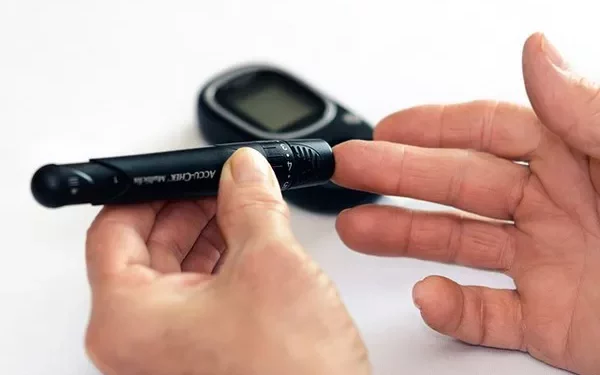Blood sugar, or blood glucose, is a vital measure of health, particularly for individuals managing diabetes or those at risk of developing the condition. Regular blood sugar testing provides insights into how well the body processes glucose, a key energy source derived from the foods we eat. Maintaining normal blood sugar levels is crucial for overall health, as fluctuations—whether too high (hyperglycemia) or too low (hypoglycemia)—can lead to severe complications over time.
But what exactly constitutes a normal blood sugar test result? Understanding normal ranges, different types of glucose tests, and factors influencing blood sugar can help individuals manage their health more effectively. This article will provide a comprehensive guide to normal blood sugar test results, their significance, and ways to maintain optimal glucose levels.
1. Understanding Blood Sugar and Its Role in the Body
Blood sugar refers to the concentration of glucose circulating in the bloodstream. Glucose serves as the body’s primary source of energy and is essential for the functioning of organs, particularly the brain.
The body regulates blood sugar levels through the actions of insulin and glucagon, two hormones produced by the pancreas:
- Insulin: Helps lower blood sugar by allowing cells to absorb glucose for energy or storage.
- Glucagon: Raises blood sugar by signaling the liver to release stored glucose when levels are low.
When this regulatory system malfunctions, such as in diabetes or insulin resistance, blood sugar levels become imbalanced, increasing the risk of health complications.
2. Types of Blood Sugar Tests and Their Normal Ranges
Blood sugar levels can be measured using different tests, each serving a specific purpose in diagnosing diabetes, monitoring blood sugar control, or assessing overall metabolic health.
Fasting Blood Sugar (FBS) Test
A fasting blood sugar test measures blood glucose levels after at least 8 hours of fasting (typically done in the morning before breakfast). It provides insight into how well the body regulates blood sugar in a fasting state.
Normal Fasting Blood Sugar Levels:
- Normal: 70–99 mg/dL (3.9–5.5 mmol/L)
- Prediabetes: 100–125 mg/dL (5.6–6.9 mmol/L)
- Diabetes: 126 mg/dL (7.0 mmol/L) or higher on two separate tests
A fasting blood sugar level of 126 mg/dL or higher is a key indicator of diabetes.
Postprandial Blood Sugar (PPBS) Test
A postprandial blood sugar test measures blood glucose levels 1–2 hours after eating a meal. This test helps determine how well the body processes glucose following food intake.
Normal Postprandial Blood Sugar Levels:
- Normal: Less than 140 mg/dL (7.8 mmol/L)
- Prediabetes: 140–199 mg/dL (7.8–11.0 mmol/L)
- Diabetes: 200 mg/dL (11.1 mmol/L) or higher
If post-meal blood sugar consistently exceeds 200 mg/dL, it suggests diabetes or impaired glucose metabolism.
Random Blood Sugar (RBS) Test
A random blood sugar test measures blood glucose levels at any time of the day, regardless of when the individual last ate. This test is often used in emergency settings or when symptoms of diabetes are present.
Normal Random Blood Sugar Levels:
- Normal: Below 140 mg/dL (7.8 mmol/L)
- Diabetes: 200 mg/dL (11.1 mmol/L) or higher (along with symptoms like excessive thirst, frequent urination, or unexplained weight loss)
Hemoglobin A1c (HbA1c) Test
The A1c test measures average blood sugar levels over the past 2–3 months. It reflects long-term glucose control rather than a single-day reading.
Normal A1c Levels:
- Normal: Below 5.7%
- Prediabetes: 5.7–6.4%
- Diabetes: 6.5% or higher
A higher A1c indicates poor blood sugar control, increasing the risk of diabetes complications.
Oral Glucose Tolerance Test (OGTT)
The OGTT is used to assess how the body processes glucose over time. It is commonly used to diagnose gestational diabetes and impaired glucose tolerance. The test involves fasting overnight, consuming a glucose solution, and measuring blood sugar at intervals over two hours.
OGTT Blood Sugar Levels (2 Hours After Glucose Intake):
- Normal: Below 140 mg/dL (7.8 mmol/L)
- Prediabetes: 140–199 mg/dL (7.8–11.0 mmol/L)
- Diabetes: 200 mg/dL (11.1 mmol/L) or higher
If results are consistently elevated, it may indicate diabetes or insulin resistance.
3. Factors Affecting Blood Sugar Levels
Several factors influence blood sugar levels, even in healthy individuals. Understanding these factors helps maintain stable glucose levels.
Diet and Carbohydrate Intake
Carbohydrates directly impact blood sugar. Foods high in refined carbs and sugars (e.g., white bread, sodas, sweets) cause rapid blood sugar spikes, while fiber-rich, whole foods (e.g., vegetables, whole grains, legumes) promote stable glucose levels.
Physical Activity
Exercise increases insulin sensitivity, helping muscles absorb glucose efficiently. Regular physical activity lowers fasting and post-meal blood sugar levels.
Medications
Diabetes medications such as insulin, metformin, and SGLT2 inhibitors help regulate blood sugar. However, some medications (e.g., steroids, beta-blockers) may increase blood sugar levels.
Stress and Hormones
Stress triggers the release of cortisol and adrenaline, leading to higher blood sugar levels. Chronic stress can contribute to insulin resistance.
Illness and Infection
Sickness causes the body to release stress hormones, which can elevate blood sugar levels. People with diabetes may require adjusted medication doses when ill.
Sleep Quality
Poor sleep can lead to higher blood sugar levels by affecting insulin sensitivity. Ensuring 7–9 hours of sleep per night supports glucose metabolism.
Hydration
Dehydration concentrates blood sugar levels, making it essential to drink enough water daily.
4. Consequences of Abnormal Blood Sugar Levels
Blood sugar levels that deviate from the normal range can lead to both short-term and long-term complications.
Hyperglycemia (High Blood Sugar) Risks
- Increased thirst and urination
- Blurred vision
- Fatigue
- Nerve damage (neuropathy)
- Kidney disease (nephropathy)
- Heart disease and stroke
Hypoglycemia (Low Blood Sugar) Risks
- Dizziness and shakiness
- Sweating and confusion
- Seizures or unconsciousness (severe cases)
- Increased risk of falls in older adults
Maintaining stable blood sugar levels minimizes these risks and supports overall health.
5. Strategies for Maintaining Normal Blood Sugar Levels
Achieving and maintaining normal blood sugar requires lifestyle modifications and, in some cases, medical intervention.
Dietary Modifications
- Focus on whole, unprocessed foods
- Choose low-glycemic-index (GI) foods
- Monitor portion sizes
- Limit added sugars and refined carbohydrates
Regular Exercise
- Aim for 150 minutes of moderate exercise per week
- Include a mix of aerobic and strength training exercises
Blood Sugar Monitoring
- Regular testing helps track trends and make adjustments
- Use a continuous glucose monitor (CGM) if necessary
Medical Management
- Take medications as prescribed
- Consult a healthcare provider for personalized treatment plans
Conclusion
A normal blood sugar test result varies depending on the type of test conducted. While a fasting blood glucose level of 70–99 mg/dL is ideal for non-diabetics, those with prediabetes or diabetes have different target ranges. Regular monitoring, lifestyle changes, and proper medical care can help maintain healthy blood sugar levels and prevent complications. Understanding what constitutes a normal blood sugar test result empowers individuals to take control of their metabolic health.
Related topics:


























